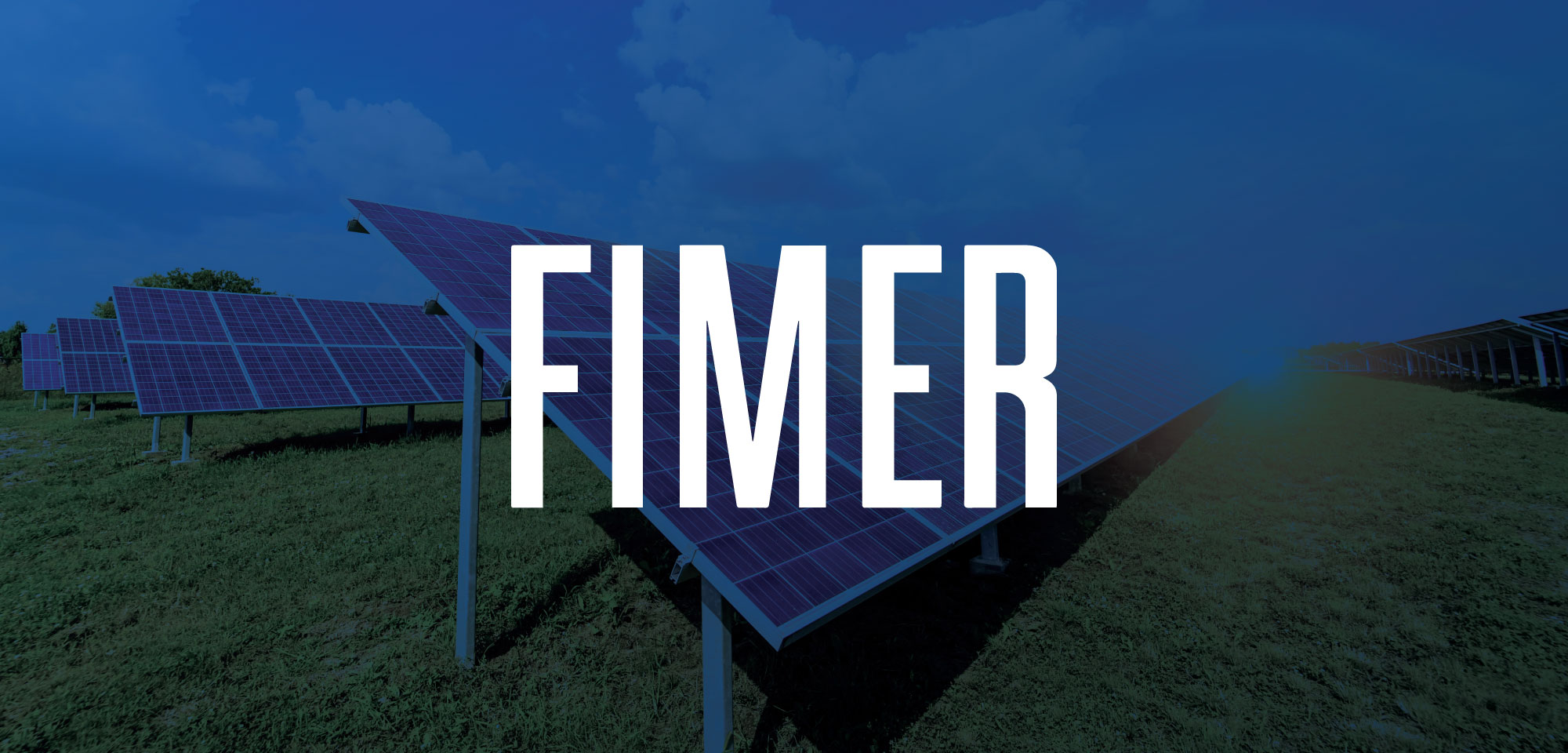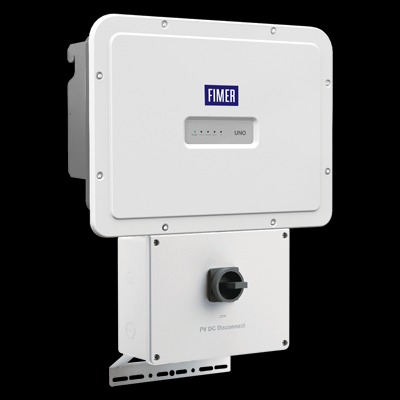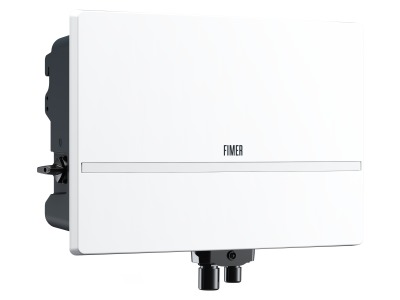Updated 8 months ago
A deep dive into FIMER inverters and solar batteries
Written by
Michael Cheng

Find out what solar panels cost in your area
Nowadays, homeowners have numerous options when it comes to solar equipment like inverters and batteries. Many people mix and match different brands, which can lead to compatibility and warranty issues if done incorrectly.
Perhaps a different, and possibly better approach, is to stick with one brand or manufacturer that offers all the essential solar products you need at home. This way, all of your equipment would work harmoniously together, turning your home into a fully functioning and productive ecosystem.
A company taking this approach to residential solar and power equipment is FIMER. The Italy-based business sells inverters and solar batteries in the U.S. With its growing portfolio of products, it is helping households reduce reliance on harmful fossil fuels and transition to a renewable future.
In this article, we put FIMER’s inverters and solar battery under a microscope to help you decide if the company’s products are right for your home.
Key takeaways
-
FIMER offers string and hybrid inverters for the U.S. solar market. It also manufactures accompanying at-home EV chargers, but they are not available in America.
-
FIMER’s UNO-DM string inverter comes with a wide range of capacities; your solar installer will be able to determine the right size for your specific solar system.
-
The UNO-DM string inverter is cheaper than other popular string inverters and its specs and warranty are comparable to those made by SolarEdge, Sungrow, and Fronius.
-
FIMER’s PowerUNO hybrid inverter makes sense for homeowners who install battery storage with their solar systems, but pricing and warranty information are currently unavailable.
-
FIMER’s lithium iron phosphate solar battery, the PowerX, debuted in January 2022 and is easily paired with FIMER’s string inverters. Its cost and warranty information are unknown at this time.
Company overview
FIMER is a global company serving residential, comercial, and utility sectors. Founded in 1942 by Arturo Sottocorno, the business is the fourth-largest solar inverter supplier in the world. The company achieved this status in 2020 after acquiring Asea Brown Boveri’s (ABB) solar inverter business.
Although FIMER mostly operates from its Vimercate, Italy headquarters, its products can be found in numerous hubs across 26 countries, including the U.S. The company is also an active participant in large-scale energy production projects, such as solar farms.
In each section below, we’ll outline product descriptions, costs and warranties, and how they compare to other products on the market.
But first, something to note - FIMER is popular in the U.S., but its products seem to be more focused on the European market, which is something to bear in mind while shopping its suite of products. Most notably, FIMER’s popular at-home EV chargers are not sold in the U.S.
FIMER inverters
For their U.S. market, FIMER offers solar string inverters and hybrid inverters. Let’s explore each.
UNO-DM string inverter

Image source: FIMER
String inverters convert direct current (DC) power that solar panels generate into AC power the appliances in your home can use. Most everyday appliances inside your home, from refrigerators to air conditioning systems, are compatible with, and rely on, single-phase, alternating current (AC) power.
FIMER sells both single-phase and three-phase solar string inverters for solar panel systems. For this post, we’ll focus only on single-phase inverters because this is the type that is used for homes. You cannot power single-phase equipment using a three-phase power source and vice versa (doing so will result in electrical damage).
FIMER’s UNO-DM series string inverters come in several capacities - 3.3, 3.8, 4.6, 5.0, and 6.0 kilowatts (kW). Whichever size you choose depends on the size of your solar system and your home’s power consumption; your solar installer will be able to determine the right size inverter for you.
They have an operating efficiency rate of 97% to 97.4%, which is in line with the industry standard and is acceptable.
You can easily monitor their performance via smart wireless access from a web browser. This is handy for homeowners, as you don’t need to stand in front of the inverter to check on it, which can be especially difficult if the equipment is installed in a hard-to-access location. You can use your computer, phone, or tablet to keep an eye on your inverter and configure settings if needed.
Cost
FIMER UNO-DM string inverters are made in Italy and are reasonably priced compared to competing brands. Expect to pay between $700 to $1,000 for FIMER inverters up to 3.3 kW (UNO-DM-3.3). String inverters in the 4.0 to 6.0 kW range cost between $1,000 and $1,500.
Warranty
FIMER’s UNO-DM string inverters come standard with a five-year warranty, which can be extended another five years by purchasing additional coverage under the ASSURE plan. The warranty cannot be extended beyond 10 years, and coverage starts on the date of purchase.
Warranty claims cannot be made if it has been modified or improperly installed, which makes choosing a qualified and reputable installer all the more important.
Learn more: How SolarReviews rates solar installers in your area
Comparing specs to big-name brands
Let’s compare FIMER UNO-DM series string inverters with leading string inverters available in the U.S. from manufacturers SolarEdge, and Fronius.
FIMER UNO-DM vs. popular string inverters | ||||
| FIMER UNO-DM | SolarEdge HD-Wave | Sungrow | Fronius PRIMO |
|---|---|---|---|---|
Cost | $700 - $1,500 | $1,450 - $2,650 | $950 - $1,500 | $1,300 - $2,450 |
Capacity | 3.3 - 6.0 kW | 3.0 - 6.0 kW | 2.0 - 6.0 kW | 3.0 - 8.2 kW |
Warranty | 5+ years (extensions) | 12 years | 5 years | 10+ years (extensions) |
FIMER string inverters are the most affordable. With a maximum warranty period of 10 years, you could end up replacing this system after the warranty period, resulting in higher costs in the long-term - however, this is typical of inverters and is generally considered to be the industry standard.
Fronius PRIMO string inverters offer the widest capacity range out of the group. Fronius also provides the best warranty, which starts at 10 years, with the option to purchase warranty extensions from your installer of up to 15 or 20 years.
Sungrow offers the shortest warranty period of five years.
PowerUNO hybrid inverter

Image source: FIMER
Hybrid inverters are 2-in-1 products that combine the features of a standard solar inverter and a battery inverter.
If you plan on including a battery with your solar installation, it would make sense to consider using a hybrid inverter because it will already have both of the components you need. Compared to mixing and matching different string and battery inverter products from different brands, hybrid inverters are less prone to compatibility issues.
FIMER’s hybrid inverters under the PowerUNO Series are available in the following capacities: 2.0, 3.3, 4.0, 4.6, 5.0, and 6.0 kW.
It comes with built-in Wi-Fi capabilities, allowing you to monitor it through a mobile app or computer. Like other FIMER products, it is equipped with plug-and-play connections for easy, quick installations. The PowerUNO is blockchain ready, but this feature doesn’t have any useful applications for homes yet.
Cost and warranty
This is a relatively new product, which was only released for purchase in January 2022. Because of this, pricing and warranty information for the PowerUNO are unavailable at this time.
Comparing specs to big-name brands
How does FIMER’s PowerUNO compare to hybrid inverters from Eco-Worthy, PowMR, and SunGoldPower?
FIMER PowerUNO vs. popular hybrid inverters | ||||
| FIMER PowerUNO | Eco-Worthy | PowMr POW-HVM | SunGoldPower |
|---|---|---|---|---|
Cost | ? | $590 - $840 | $720 - $799 | $1,595 |
Capacity | 2.0 - 6.0 kW | 3.5 or 5.0 kW | 3.6 or 6.0 kW | 6.0 kW |
Warranty | ? | 1 year | 2 years | 2 years |
Without factoring in the PowerUNO, the PowMr POW-HVM 6.0 kW features the best price for the highest capacity at $720. The best price for the hybrid inverter with the lowest capacity goes to the Eco-Worthy 3.5 kW model with a $590 price tag.
The best warranty coverage in this group goes to the PowMr POW-HVM series, which comes with a two-year warranty. SunGoldPower also features a two-year warranty, but is priced much higher.
When it comes to capacity range, the FIMER PowerUNO series provides the widest selection in the group at 2.0 to 6.0 kW. Other brands are limited to offering only one or two capacity options.
Solar battery
Solar batteries allow you to store solar energy from your solar panels for use when sunlight is unavailable, such as at night or during rainy weather. Solar batteries also serve as emergency backup during power outages.
If you live in an area that frequently experiences power outages, adding a solar battery to your home is recommended. For off-grid systems, a battery with a large capacity is vital for powering appliances and comfortable living.
FIMER’s PowerX solar battery

Image source: FIMER
FIMER’s PowerX solar battery was announced in January, 2022, but the company had it listed as “coming soon” on its website as recently as November, 2022 yet so getting your hands on it could be difficult.
The PowerX battery can be easily paired with FIMER’s line of string inverters. Installations are tool-free and plug-and-play, making the process very quick. The PowerX battery is lithium iron phosphate and comes in the following capacities: 9.6 kWh, 12.8 kWh, and 16 kWh. You can expand the storage system all the way up to 48 kWh by connecting up to three 16 kWh battery stacks together.
According to the U.S. Energy Information Agency (EIA), homes consume approximately 30 kWh of power per day, so if you’re just looking to offset your daily electricity usage or you only need temporary backup power during emergencies and unforeseen power outages, a 9.6 kWh or 12.8 kWh battery should suffice.
The battery can be discharged up to 90%. This means you can use most of the stored energy before needing to recharge it, and using 90% of the battery will not result in damage.
Cost and warranty
Warranty and pricing for FIMER’s PowerX batteries are unavailable at this time. However, you can offset the cost of the battery with the federal clean energy tax credit as long as you use your solar panels to charge the battery 100% of the time.
Comparing specs to big-name brands
Let’s take a look at how the FIMER PowerX compares with the Tesla Powerwall, Generac PWRcell, and LG RESU10H Prime based on what we do know about it, including its usable capacity, battery type, and depth of discharge.
FYI - Depth of discharge, or DoD for short, refers to how much of the battery you can use before needing to charge it. You don’t want to exceed the depth of discharge rate for solar batteries, as it could result in damage.
FIMER PowerX vs. popular solar batteries | ||||
| FIMER PowerX | Tesla Powerwall | Generac PWRcell | LG RESU10H Prime |
|---|---|---|---|---|
Cost | ? | $9,300 | $10,000 | $6,400 - $7,200 |
Usable capacity | 9.6 kWh* | 13.5 kWh | 9 kWh | 9.6 kWh |
Battery type | Lithium iron phosphate (LFP) | LFP | NMC lithium ion | NMC lithium ion |
Depth of discharge | 90% | 100% | 84% | 100% |
Warranty | ? | 10 years, unlimited cycles | 10 years or 22.68 MWh throughput | 10 years or 32 MWh throughput |
*Total capacity
Prices for these solar batteries vary, with the Tesla Powerwall being the best value with an impressive 11.5 kW power output and 13.5 kWh capacity. You don't have to sacrifice price for performance — the Tesla Powerwall costs just $681 per kWh of storage!
The Generac PWRcell is the most expensive, offers the lowest capacity at 9 kWh, lowest DoD at 84%, and lowest throughput limit.
When it comes to usable capacity, the Tesla Powerwall offers the highest at 13.5 kWh. It also has a 100% DoD and the best warranty coverage.
Do we recommend FIMER's solar products?
FIMER’s UNO-DM string inverter is a low-cost option that comes in a variety of capacities. Smart monitoring makes it easy to check on, as well. Its warranty of five years with the option to extend it to 10 is in line with industry standards. If you’re looking for a string inverter for your solar installation, the UNO-DM is a solid choice.
Unfortunately, the PowerUNO hybrid inverter is a very new product without pricing, availability, or warranty information.
Regardless, it is offered in several capacities, so it can meet the needs of a wide range of home solar installations. You also get Ethernet and Wi-Fi for connectivity, allowing you to easily monitor the inverter’s performance from a computer or mobile app. Equipped with plug-and-play connections, your solar installer should be able to set up the inverter quickly.
The PowerX solar battery does not have available pricing or details about its warranty, either.
We do, however, know that it is expandable up to 48 kWh due to its modular components, so if you decide you need a larger battery later on, you can choose to add more batteries to the system. You can also easily connect FIMER inverters to this battery, which is a plus. And a magnetic cover makes the internal components accessible for maintenance.
Final word on FIMER
Choosing the FIMER ecosystem of products is a great way to keep your solar equipment working consistently at home, helping you avoid issues associated with mixing and matching different brands.
The company’s inverters, solar batteries, and other products like EV chargers (which are only available in countries outside the U.S.) are designed to work cohesively together. As a result, your solar experience at home will be smoother and less prone to compatibility issues.
Unfortunately, FIMER’s presence in the U.S. isn’t as strong as it is abroad, making it hard to compete with other brands that make their products widely available at reasonable prices in the U.S., as well as complete warranty protection.
We know FIMER is constantly developing its products and expanding its operations. If the Italian company is able to expand its warranty coverage and availability for some of its products, then it could be in a better position to serve the U.S. residential solar and e-mobility market - especially because these products are designed to work together inside your home, which is uncommon for inverters, solar batteries, and electric vehicle chargers.
Michael is a content writer at SolarReviews. He has more than six years of experience in industrial manufacturing and legal documentation, covering electrical safety, large-scale infrastructure, and maritime legislation. As a strong supporter of renewable energy, he uses a technical approach to deliver unique insights and content about solar....
Learn more about Michael Cheng